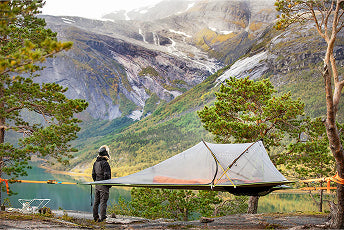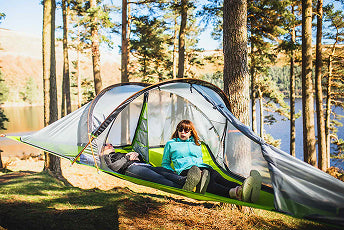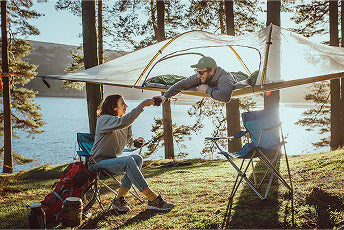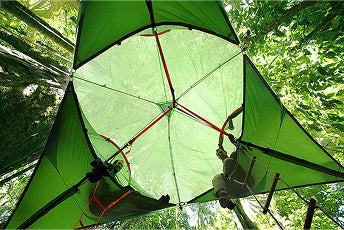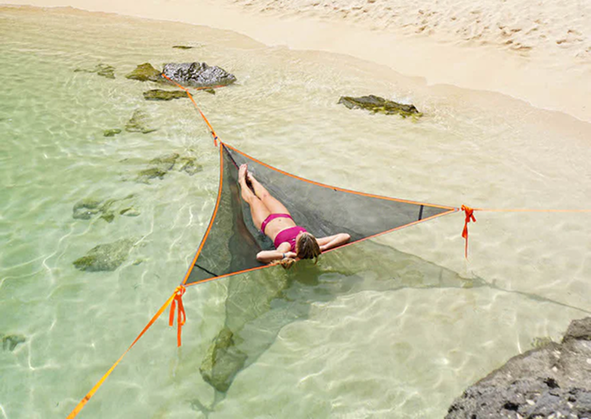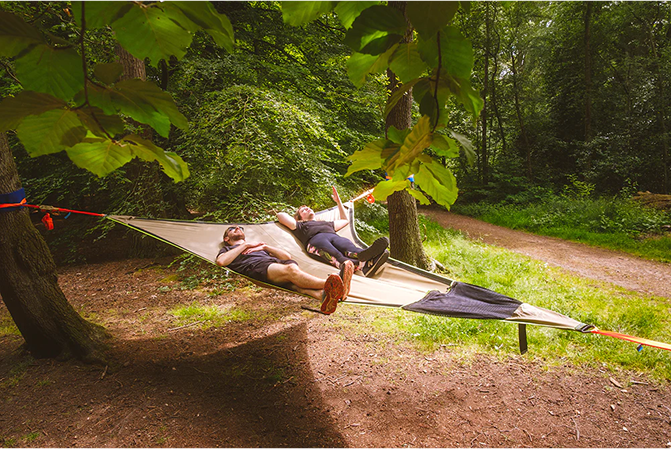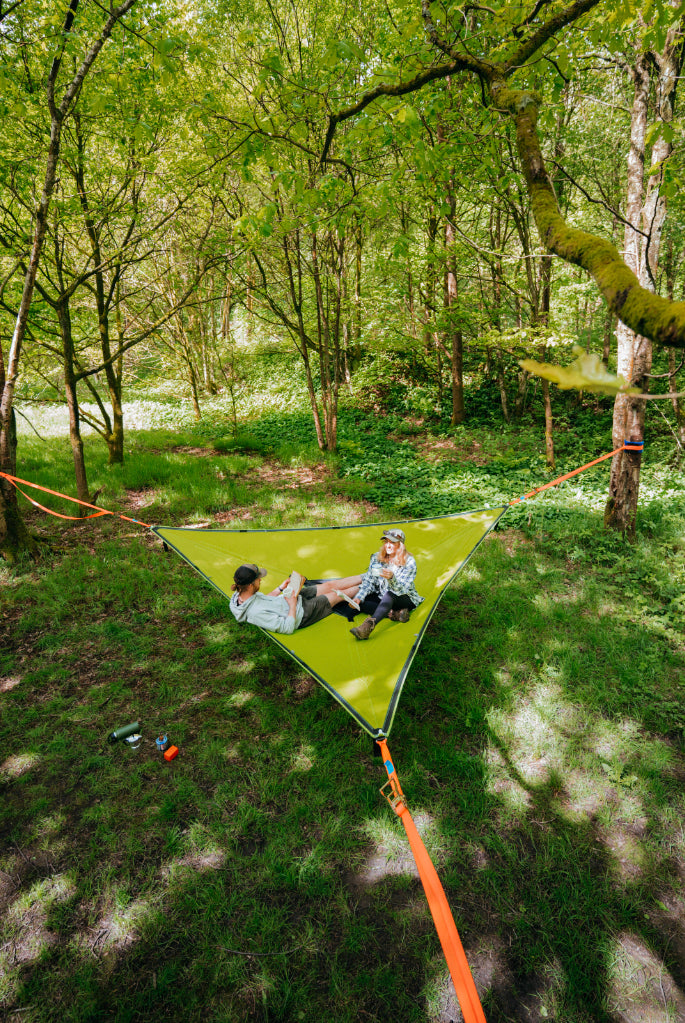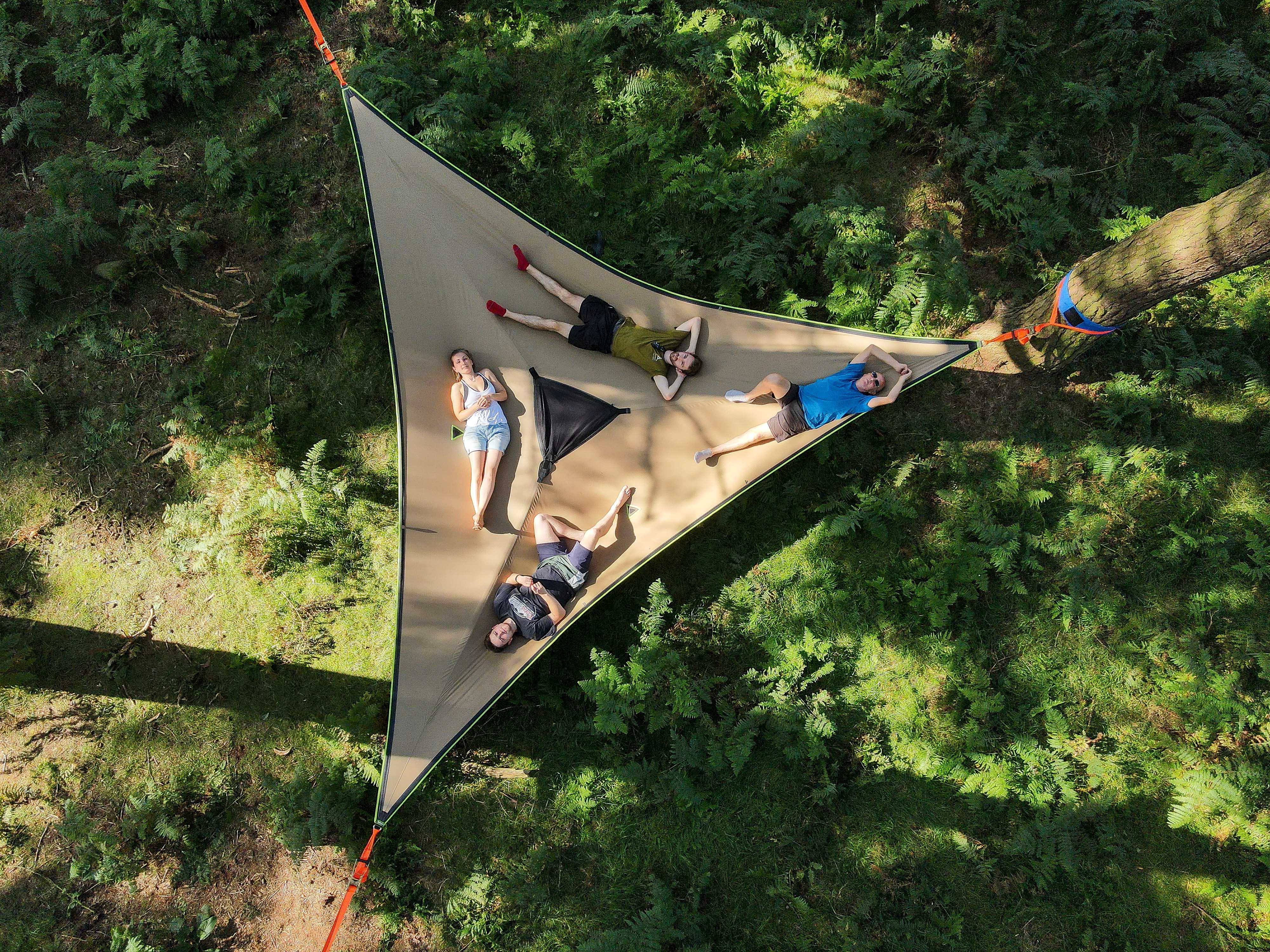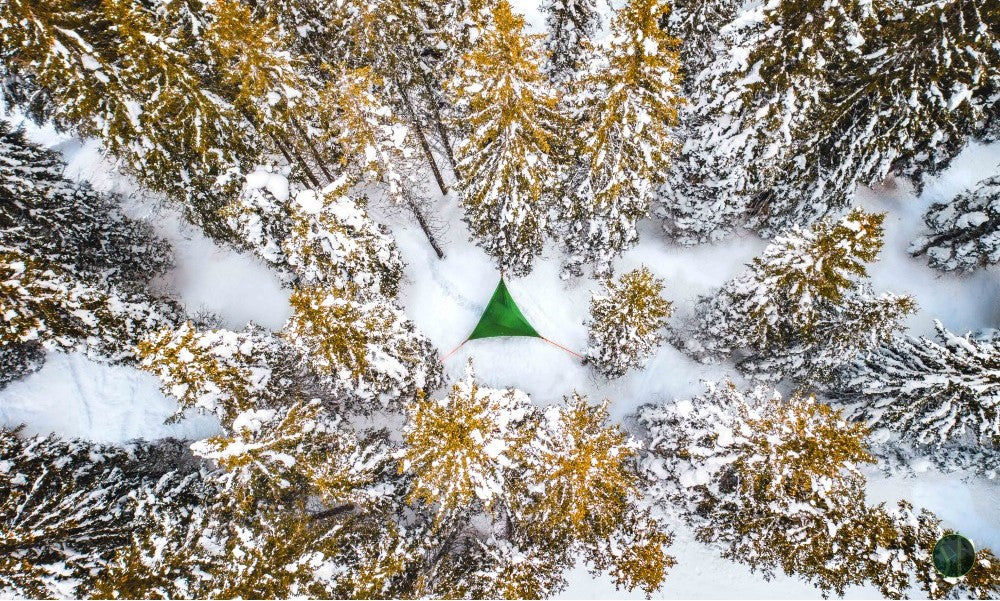Camping doesn’t have to be a summer activity; with the right gear you can enjoy the outdoors all year round (if the weather doesn’t get too extreme 😉). So, if you’re planning on a winter camping trip this season here are a few suggestions for insulating your tree tent to help you stay warmer in the colder months!
1. The Right Sized Tent
When it comes to cooler weather camping it's important to pick the right tent for your party size, as more space is just more space to keep warm - the aim is to be as thermally efficient as you can be so you’re not heating extra space.
Try to make sure you have the same amount of occupants as you do spaces to sleep, allowing you to be efficient with your heat while also having extra people to share body warmth within the tent.
2. Floor Insulation
As with a ground tent, insulating the floor of your tree tent is a key step in ensuring you stay warm and comfortable. Adding foam padding, sleeping mats as well as thermal blankets to your set-up, all help to keep the warmth inside your tent. The aim is to keep a buffer between you and cold air.
Our Insulated Quilts are designed for year round comfort and insulation with an R-value of 2.7. Attach inside or as an under quilt beneath the tent (or both!) to create a bubble of air that keeps you cosy warm and negates the unpleasant experience of 'Cold Butt Syndrome' (yes, it's a thing...). Each of our Tree Tents has a custom designed quilt to fit neatly to the footprint of your model.

3. Wind Breaks
To help prevent cool air hitting the bottom of your tree tent, try setting up a windbreak around the sides of the tent to act as a buffer between you and the elements.
By using the Tentsile walls around each side of your tent it will help to create a barrier and lock-in more heat. The walls will also create an extra covered and protected space below you to store gear and set-up camp, keeping it sheltered from rain.
4. Keep Your Gear Ready
As any Tentsile camper already knows, all our Tree Tents come with a fully waterproof rainfly - 5000HH for Classic models, 8000HH for Safari versions. Together with the built-in insect mesh, the rain fly helps to further lock in heat, as well as providing a rain and wind proof protective layer over your tent.
If you’ve already been using your rainfly for a couple of seasons, it’s worth setting up and testing its waterproof quality before you embark on a camping trip. Your rainfly may need re-waterproofing which can be easily done with a product like NikWax.
Our rainflies are intended to last for many years when used correctly, but, if you find your rainfly is now in need of replacement, you can opt for a new one here.
You can add even more insulating qualities to you tent by placing a foil thermal blanket on the top of the Tree Tent between the insect mesh and rainfly. The blanket will reflect your own body heat back down into the tent helping to retain the heat you generate.

5. Sleeping Bag
Next up, and a camping essential is a warm sleeping bag. A mummy sleeping bag with drawstring hood will keep you cocooned and lock-in the heat. Try to go for a bag with a good temperature rating for sub-zero conditions. And if you go for a down filled bag, don’t forget to make sure it’s ethically sourced.
6. Heat Packs
And if all else fails, get yourself some heat packs to pop inside your sleeping bag to help keep you warm all night. Or, try a good old fashion hot water bottle as the next best thing! Yes, you’ll need to boil water, but there’s nothing like a hot water bottle to warm those frozen toes!
Make sure you’re prepared for off season camping, and get geared up. If you have any top tips for staying warm while winter camping leave us a comment below. We’d love to hear of other great ways to insulate your tent.

